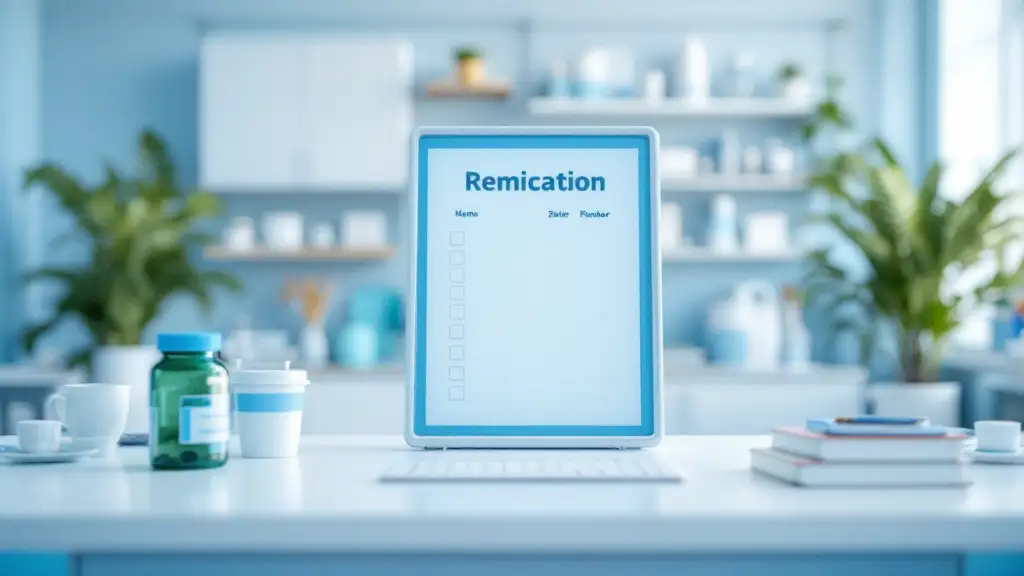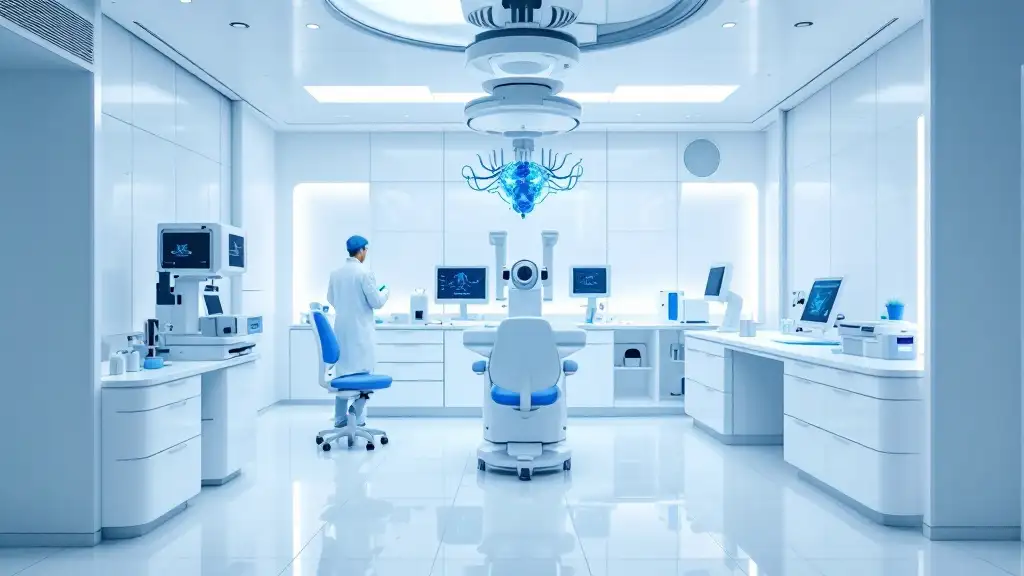Unraveling OCD: Signs, Diagnosis, and Effective Treatments
Obsessive-Compulsive Disorder (OCD) is a common, yet often misunderstood, mental health condition that impacts millions worldwide. Characterized by persistent unwanted thoughts and repetitive behaviors, OCD can significantly interfere with daily life. By understanding its signs and symptoms, exploring diagnosis procedures, and examining available treatment options, individuals and their loved ones can better navigate this complex disorder and seek appropriate support.
Core Elements of OCD: Obsessions, Compulsions, and Emotions
What are the common signs and symptoms of OCD?
People with Obsessive-Compulsive Disorder (OCD) often experience a cycle of intrusive thoughts, feelings, and behaviors that can significantly impact their daily lives. The hallmark signs include unwanted, persistent thoughts known as obsessions. These obsessions are often distressing and difficult to control. Common themes include fears of germs and contamination, worries about causing harm to oneself or others, unwanted sexual or religious thoughts, and a need for perfect symmetry or order.
Alongside these obsessions, individuals engage in compulsions—repetitive actions or mental rituals aimed at reducing anxiety or neutralizing the obsessive thoughts. Typical compulsive behaviors include excessive handwashing, checking behaviors, arranging items meticulously, counting rituals, and seeking reassurance through repeated questioning or routines.
Most people with OCD are aware that their compulsions are irrational but feel driven to perform them to lessen distress or prevent feared events. These symptoms often interfere with daily routines, relationships, and responsibilities, and tend to appear during late childhood or early adulthood.
While some individuals may experience only obsessions or only compulsions, most display both, with symptoms varying in severity. The recognition that these thoughts and actions are unreasonable does not eliminate the compulsions or obsessions, as the urge to perform them persists.
It is important to understand that these symptoms are more than normal routines; they are intense, uncontrollable, and frequent enough—often taking more than an hour daily—to be considered diagnostic of OCD. Seeking professional help can lead to effective management through therapy and medication, improving quality of life.
Understanding Obsessions in OCD
What are the common signs and symptoms of OCD?
People with Obsessive-Compulsive Disorder (OCD) often experience persistent, unwanted thoughts called obsessions. These intrusive thoughts can involve fears of contamination, worries about causing harm to oneself or others, or unwanted sexual, religious, or violent ideas. Such thoughts are distressing and often feel outside of the individual's control.
To try to cope with these distressing thoughts, individuals frequently engage in compulsive behaviors. Common compulsions include excessive hand-washing, checking objects or locks repeatedly, ordering or arranging items, seeking reassurance, or performing mental rituals like counting or repeating words silently.
Although many recognize that these behaviors are irrational, they feel driven to perform them because they reduce anxiety or prevent feared events. The severity and specific themes of obsessions and compulsions vary among individuals but often interfere significantly with daily routines.
Most people with OCD begin experiencing symptoms in adolescence or early adulthood. While some may have only obsessions or only compulsions, most experience a combination, with symptoms that can wax and wane over time. If these obsessions and compulsions impact quality of life, seeking professional help through therapy, medication, or both is advised.
Examining Common Compulsions and Behaviors
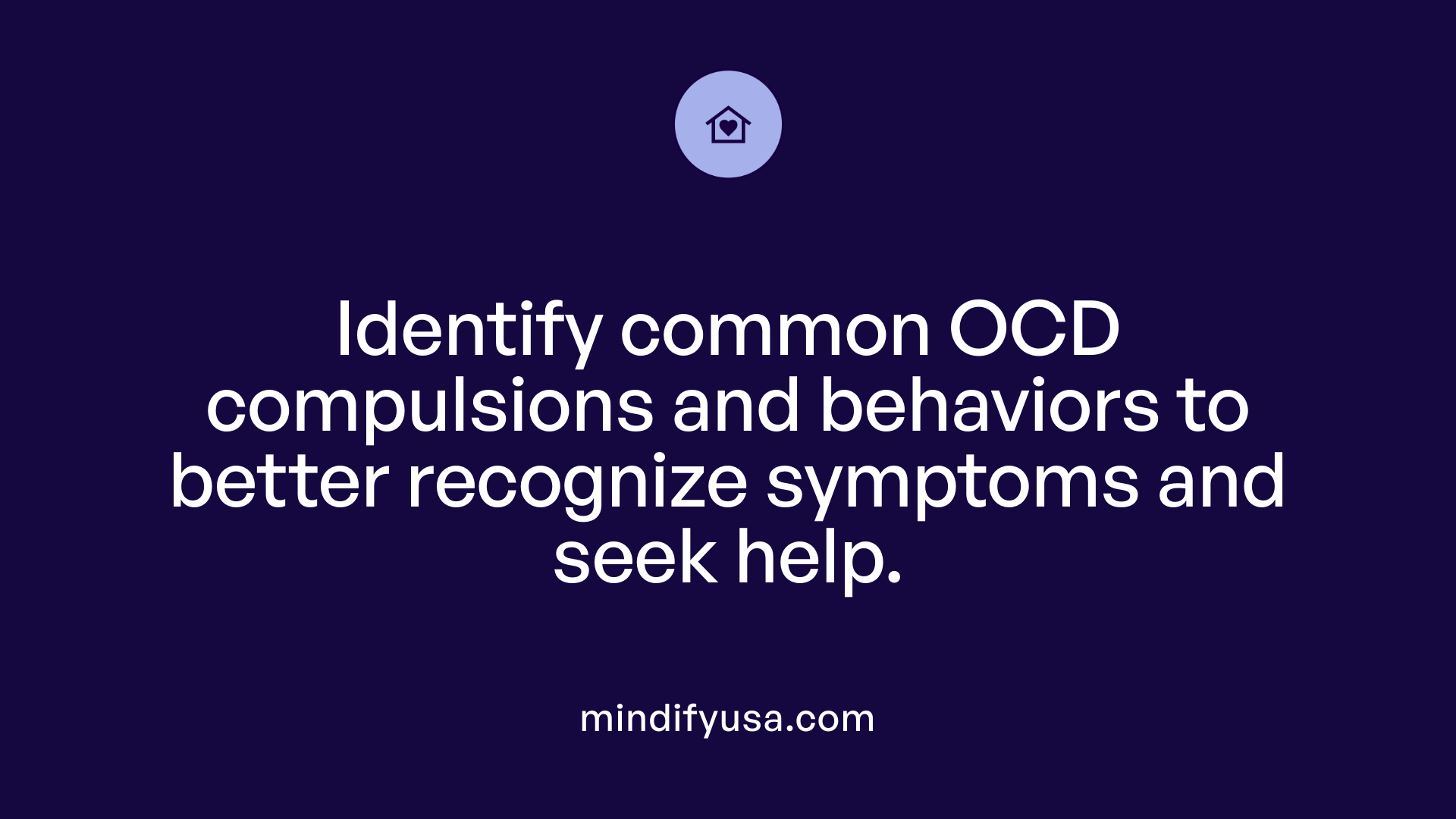
What are the common signs and symptoms of OCD?
Obsessive-compulsive disorder (OCD) manifests through persistent, unwanted thoughts called obsessions, and repetitive behaviors known as compulsions. These symptoms can significantly impact daily life and functioning.
Common signs include intrusive thoughts about contamination, fears of causing harm to oneself or others, and unwanted sexual, religious, or moral thoughts that cause distress. These obsessions are often perceived as irrational, but individuals feel driven to perform compulsive behaviors to manage their anxiety.
Typical compulsions involve actions like excessive cleaning or handwashing, repetitive checking, arranging objects in particular orders, and seeking constant reassurance. Mental rituals, such as counting or repeating words silently, are also common. These behaviors are performed to neutralize or reduce the anxiety triggered by obsessions.
While some people may experience only obsessions or only compulsions, most have both. The severity of symptoms varies, and they tend to fluctuate over time, often worsening during periods of stress.
It is important to recognize that these actions—though resistant to control—are attempts to manage overwhelming distress. Early recognition and treatment, especially therapy like cognitive-behavioral therapy, can greatly help individuals regain control and improve their quality of life.
| Symptom Type | Common Signs | Typical Behaviors | Additional Details |
|---|---|---|---|
| Obsessions | Fear of germs, harm, taboo thoughts, need for order | N/A | Recurrent, distressing unwanted thoughts |
| Compulsions | Excessive cleaning, checking, arranging, reassurance seeking | Repetitive actions or mental rituals | Performed to reduce anxiety stemming from obsessions |
| Both (Obsessions + Compulsions) | Combination of intrusive thoughts and rituals | Various, including mental and physical acts | Interferes with daily function and well-being |
If you or someone you know exhibits these signs regularly and they interfere with daily life, consulting a healthcare professional can help manage symptoms effectively.
Diagnosis of OCD: How Do Healthcare Professionals Find Clues?

What is involved in the psychological evaluation process?
Health professionals diagnose OCD through a comprehensive psychological evaluation. This process involves discussing the patient’s thoughts, feelings, and behavior patterns in detail. The clinician will inquire about the types of obsessions—unwanted, intrusive thoughts or images—and compulsions, which are repetitive behaviors aimed at reducing anxiety. Patients are asked to describe how often these symptoms occur, how much time they take each day, and how they affect their daily life. Often, clinicians use standardized questionnaires or checklists to assist in assessing the severity and impact of symptoms. This thorough approach helps identify whether OCD is contributing to distress or functional impairment.
What are the DSM-5 criteria for OCD?
According to the DSM-5, a diagnosis of OCD requires the presence of obsessions, compulsions, or both, that are time-consuming—taking more than one hour per day—or cause significant distress or impairment in social, occupational, or other important areas of functioning. Obsessions are recurrent, unwanted thoughts, urges, or images that are intrusive and cause marked anxiety or distress. Compulsions are repetitive behaviors or mental acts performed to neutralize or reduce the anxiety from obsessions. To confirm diagnosis, these symptoms must not be attributable to other medical conditions or substances and must clearly interfere with daily life.
Why are physical examinations important?
While OCD is primarily diagnosed through psychological assessment, physical examinations are also vital. Healthcare providers perform these exams to rule out other potential causes of symptoms, such as neurological issues or side effects from medication. A physical exam can also reveal any related health complications that may influence treatment choices. Ensuring that symptoms are not caused by physical health problems provides a clearer diagnosis and helps tailor the most effective management plan.
What are common signs and symptoms of OCD?
Common signs and symptoms of OCD include persistent, unwanted intrusive thoughts—called obsessions—such as fears of contamination, harming oneself or others, or taboo sexual or religious thoughts. These obsessions often lead individuals to perform repetitive behaviors or mental rituals—known as compulsions—like excessive cleaning, checking, ordering objects, or seeking reassurance. Most people with OCD recognize that their rituals are irrational but feel compelled to perform them to ease their anxiety. These symptoms often interfere with daily routines, work, and relationships, particularly when they start early in life or during adolescence. Recognizing these signs is crucial for early intervention and effective treatment.
Treatment Overview: Therapies and Medications That Make a Difference
What are the diagnosis and treatment options available for OCD?
Diagnosing Obsessive-Compulsive Disorder (OCD) involves a thorough clinical evaluation. Mental health professionals use psychological assessments and physical exams to distinguish OCD from other mental health conditions. The diagnostic criteria from DSM-V help identify whether an individual experiences frequent, distressing obsessions or compulsions that significantly interfere with daily life.
Once diagnosed, treatment options focus on reducing symptoms and improving quality of life. The primary approach is psychotherapeutic, with cognitive-behavioral therapy (CBT) serving as a cornerstone. Specifically, exposure and response prevention (ERP) is highly effective in helping individuals confront their fears and resist compulsive behaviors. This method gradually desensitizes patients to triggers, breaking the cycle of obsessions and compulsions.
Medications also play an essential role. Selective serotonin reuptake inhibitors (SSRIs) such as fluoxetine, sertraline, and clomipramine are commonly prescribed. These drugs increase serotonin levels in the brain and often require higher doses than those used for depression. Combining medication with therapy tends to produce the best outcomes.
For severe or treatment-resistant cases, advanced interventions may be considered. These include deep brain stimulation (DBS) and transcranial magnetic stimulation (TMS), which alter brain activity to alleviate symptoms. Occasionally, surgical procedures might be necessary for the most severe cases.
Ongoing support, early intervention, and regular monitoring are crucial. They ensure tailored treatment, helping individuals manage OCD effectively and regain control over their lives.
| Treatment Type | Description | Suitable For |
|---|---|---|
| Psychotherapy | Cognitive-behavioral therapy, especially ERP | Most individuals, especially effective for reducing compulsions |
| Medication | SSRIs like fluoxetine, sertraline, clomipramine | Individuals with moderate to severe symptoms |
| Advanced | Deep brain stimulation (DBS), TMS | Severe, refractory cases or when other treatments fail |
| Supportive | Psychoeducation, support groups | Complementary, ongoing management |
Early diagnosis and a combination of therapy and medication are most effective in controlling OCD symptoms, improving functioning, and enhancing quality of life.
How Therapy Reshapes Lives and Why It’s Essential
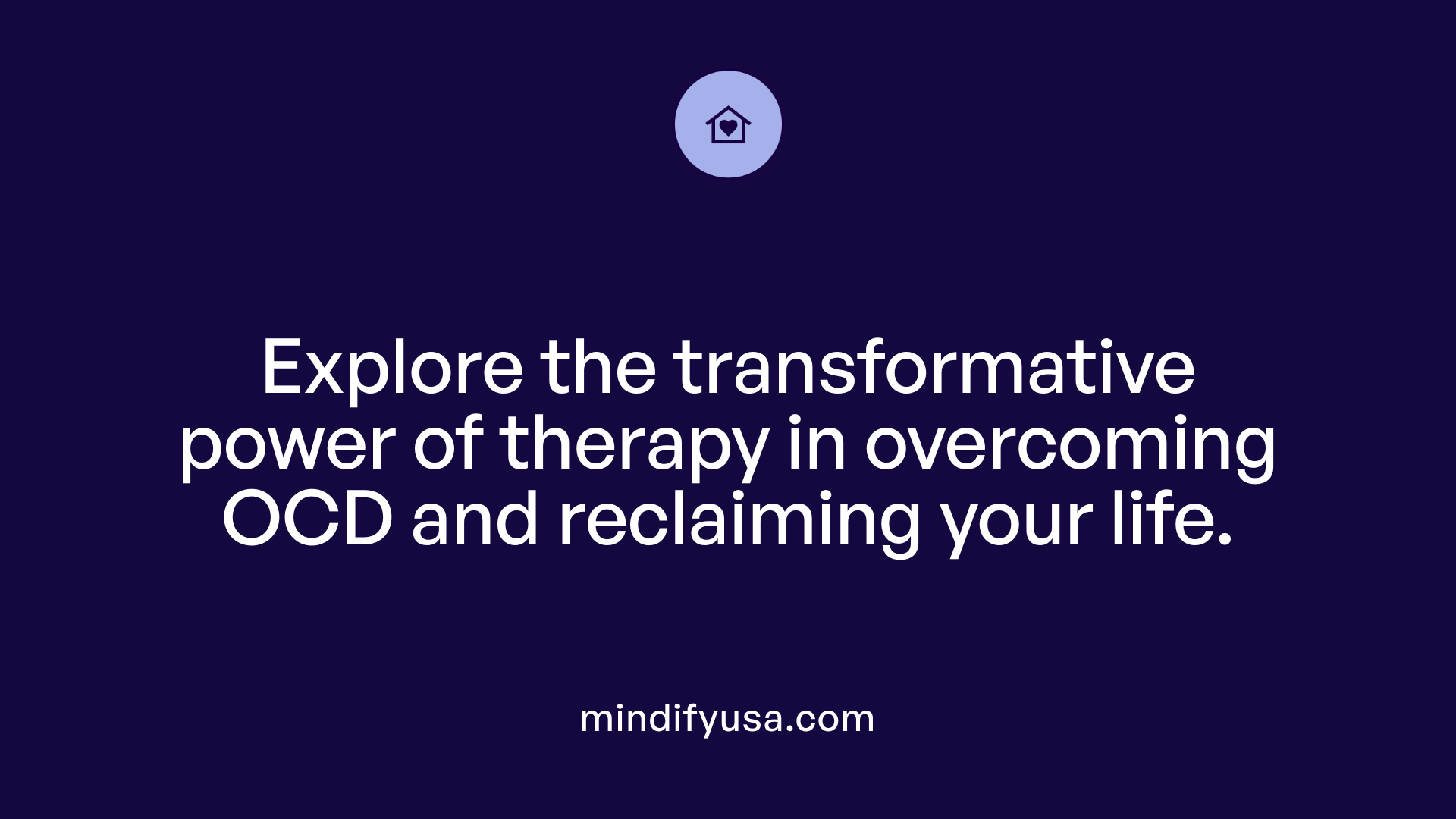
How can therapy help in managing OCD?
Therapy plays a vital role in helping individuals with OCD gain control over their symptoms. The most effective approach is cognitive-behavioral therapy (CBT), particularly a specialized form called exposure and response prevention (ERP). This therapy exposes patients gradually to anxiety-provoking situations or obsessions while teaching them to prevent the compulsive response. Over time, this reduces the anxiety linked to obsessions and diminishes the compulsive behaviors.
In addition to ERP, Acceptance and Commitment Therapy (ACT) and mindfulness-based strategies can help individuals accept their thoughts without acting on them or feeling overwhelmed. These methods promote awareness and help manage emotional responses more effectively.
Therapy is often combined with medication such as selective serotonin reuptake inhibitors (SSRIs) or other antidepressants like clomipramine. The combination of medication and therapy tends to produce the best outcomes, especially for severe cases.
Overall, psychological treatment equips people with practical skills to reduce the intensity and frequency of obsessions and compulsions, enabling them to function better and experience less distress. When OCD symptoms are effectively managed through therapy, individuals can reclaim their daily routines and improve their quality of life.
Empowering Education and Self-Help Strategies
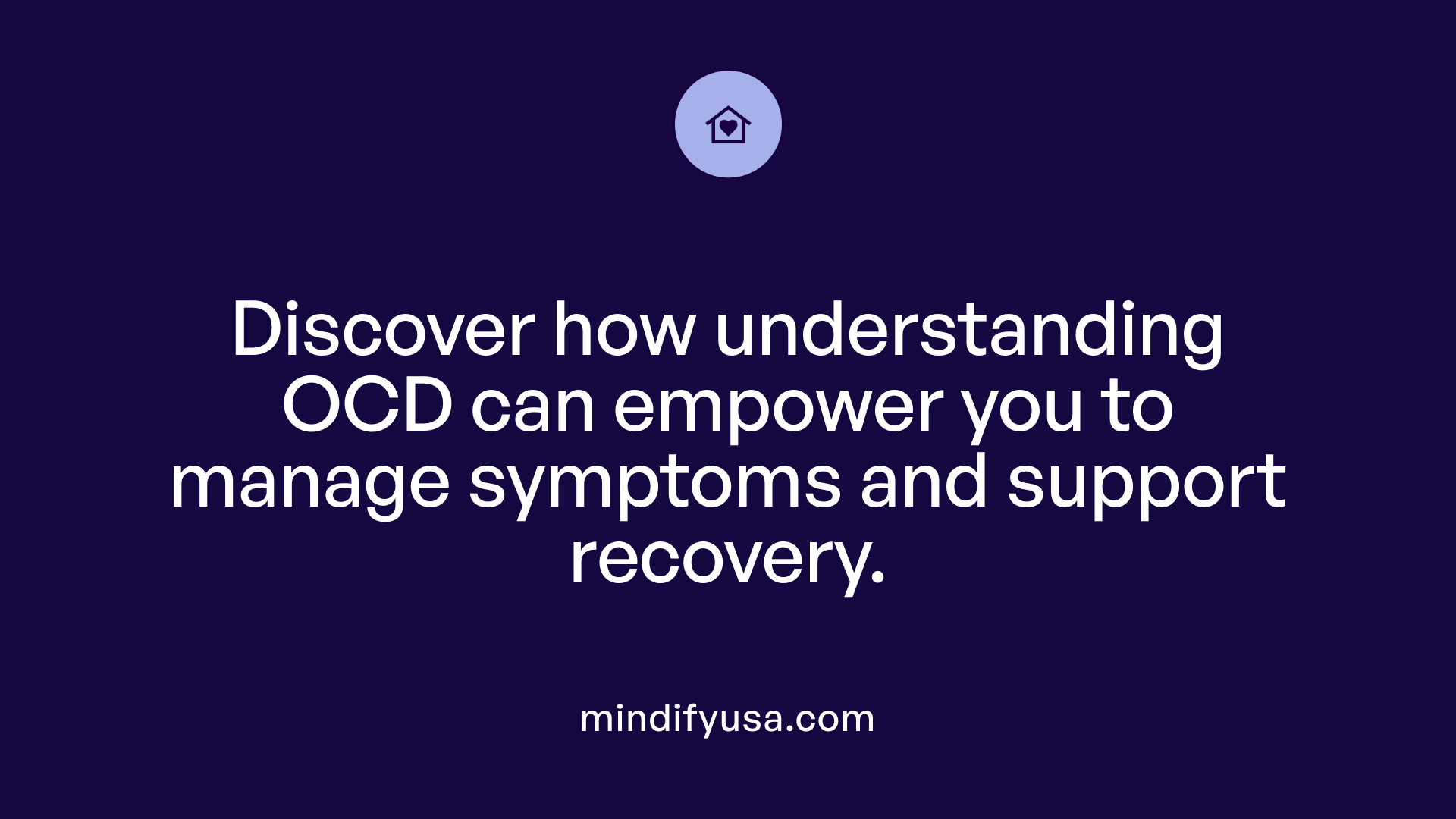
How can learning about OCD help inform health decisions?
Gaining knowledge about obsessive-compulsive disorder (OCD) is vital for early recognition and effective management. When individuals understand including common obsessions like fears of contamination, doubting, or intrusive thoughts about harm or sexuality, they become better equipped to identify symptoms promptly.
This awareness encourages timely consultation with healthcare professionals, enabling access to targeted treatments such as cognitive-behavioral therapy (CBT), exposure-response prevention (ERP), or medications like SSRIs. Recognizing that OCD symptoms are manageable can motivate people to pursue consistent treatment and adhere to prescribed plans.
Educational efforts also help reduce the stigma around OCD, fostering supportive environments for those affected. Knowing which behaviors are typical or compulsive can prevent unnecessary self-judgment and promote understanding among friends, family, and employers. Furthermore, learning about OCD's triggers and coping mechanisms empowers individuals to implement lifestyle strategies—such as stress management, mindfulness, and relaxation techniques—that complement professional care.
Being informed aids decision-making regarding lifestyle choices and helps avoid reinforcement of compulsive behaviors, for example, by reducing reassurance-seeking through Internet searches that may heighten anxiety. Understanding how OCD influences decision processes and daily routines allows for the development of practical strategies to manage doubt and indecision, ultimately enhancing quality of life.
In summary, education about OCD serves as a foundation for proactive health decisions, fostering timely intervention, supportive relationships, and effective self-management.
Towards a Better Understanding and Management of OCD
Recognizing the signs of OCD and understanding how therapy can help transform lives are vital steps toward effective management. Although OCD can be a challenging condition, modern treatments such as cognitive-behavioral therapy and medication offer hope and relief. With early intervention, ongoing support, and a comprehensive approach involving therapy, medication, and lifestyle changes, individuals can regain control, improve their quality of life, and reduce the burden of this disorder. Education and awareness remain the foundation for fostering understanding, reducing stigma, and encouraging those affected to seek timely help.
References
- Obsessive-compulsive disorder (OCD) - Symptoms and ...
- When Unwanted Thoughts or Repetitive Behaviors Take Over
- OCD (Obsessive-Compulsive Disorder): Symptoms & ...
- Symptoms - Obsessive compulsive disorder (OCD)
- Understanding OCD: What It Is and How To Treat It
- Obsessive-compulsive disorder (OCD) - Diagnosis and ...
- Obsessive-compulsive Disorder (OCD)
- Obsessive Compulsive Disorder: Signs, Types & Treatment
- Obsessive-Compulsive Disorder (OCD)
- Obsessive-compulsive disorder































































































